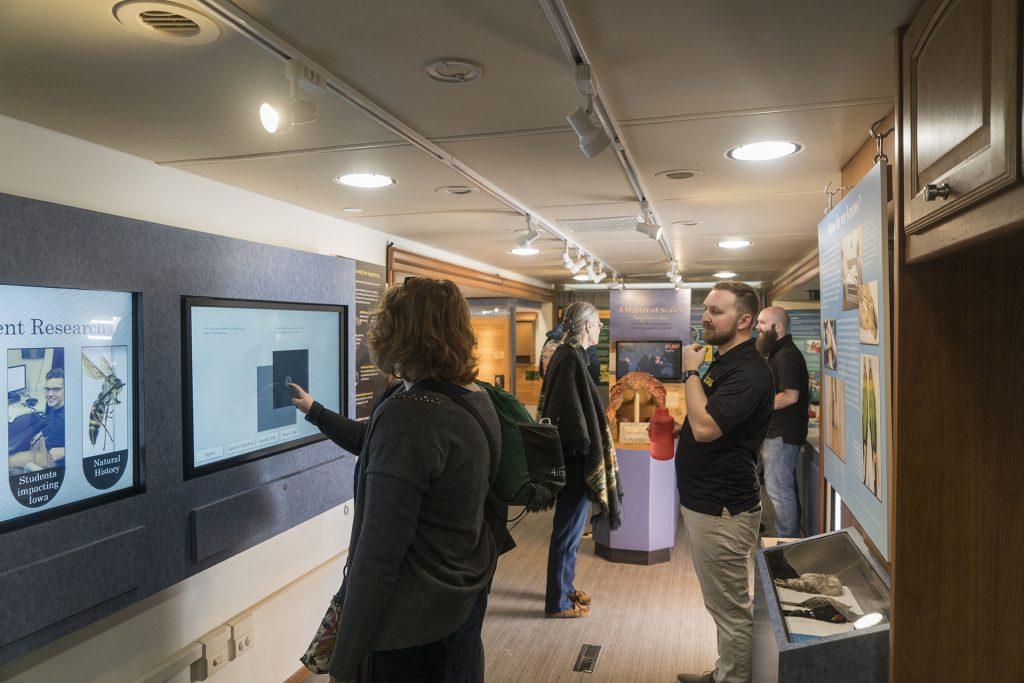The plight of the pangolin, an animal that is among the most-trafficked on Earth, is among the exhibits encountered at the University of Iowa’s Mobile Museum, which is launching its fifth season of statewide tours.
“We travel all over the state. We go to schools, fairs, festivals … anything and everything,” said J.C. Gillett, the Mobile Museum education and outreach coordinator.
The museum rides on a Winnebago bus that travels on a request-based schedule. Iowa schools and other organizations need only fill out a free online form to have the museum visit them.
The museum tours from April 1 to Oct. 31, when the weather is most cooperative.
“Our goal is to take current research that students and professors are doing right here at the university and get it out into the community,” Gillett said.
The pangolin exhibit is his current favorite, but he said his favorite exhibit overall was the Pentecopterus decorahensis, or the giant sea scorpion, that the museum featured last year. That prehistoric beast, the oldest and largest sea scorpion ever found, was discovered in northwestern Iowa, and many exhibits have an Iowa background.
Two primary exhibits for the 2018 season involve local themes. One focuses on the research and discoveries of the UI Institute for Clinical and Translational Science and the UI’s collaboration with the Iowa City-based protostudios’ 3D printing and rapid prototyping facility. Various 3D-printed items are displayed, from model human muscles to a Halo action figure.
The other includes examples of taxidermy birds and presentations about Iowa’s dwindling habitat areas, as well as information about the Iowa Raptor Project and other UI Recreational Services programs.
It focuses on information regarding Iowa’s various endangered species, too, an inevitable result of prairies and forests being cleared for farmland. There are also interactive digital displays highlighting genetic drift and natural selection.
Kevin Ripka, a UI assistant professor of journalism and mass communications, created the pangolin portion of this season’s museum to increase awareness about the decimation of the pangolins. The centerpiece of the display is a realistic model pangolin, with scales that can be pressed to see where certain illegal shipments of pangolins were caught.
More than 400,000 dead pangolins were trafficked from 2000 to 2016. Ripka said this represents only 5 to 10 percent of pangolins actually poached during that time frame.
“I love museums, but I think we can do better through digital reality,” Ripka said. “Physical things, augmented reality, things like that. We can interface better, instead of having things behind glass.”
That connection to the community is what the museum aims for, Gillett said.



